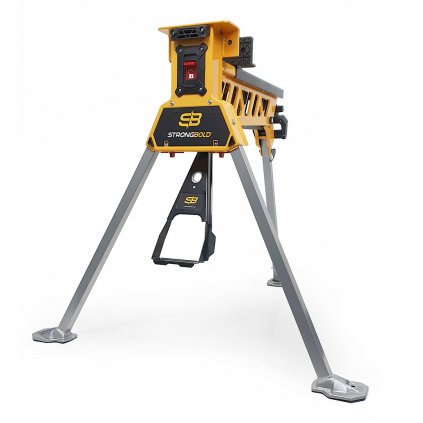Set of Japanese Sharpening Stones SANYO - Grit 250, 1000, and 4000
Code: 4797Related products
Product detailed description

Japanese water sharpening stones are known for their top-notch sharpening performance. The abrasive particles are quickly flushed out by water, which reveals new, sharp crystals and thus always provides a premium surface for sharpening any blade. During sharpening, a so-called "slurry" is formed, which can also be created with the help of "Nagura" stones. This slurry enhances the efficiency of the sharpening process. Japanese water stones should only be lubricated with water, never use oil. Never leave these stones in water for a long time, as it can affect the binding of the crystals and lead to cracking.
Set features:
✅ JIS Grit: #250, #1000, and #4000
✅ Water stones
✅ 3 basic types of coarseness for complete sharpening
✅ Includes practical wooden stand
✅ Made in Japan
Which coarseness to choose?
For sharpening really dull or uneven blades, use stones with a low JIS number (Japanese classification for grit). The lower the number, the greater the coarseness of the stone. Stones with a high JIS number are meant for final and fine sharpening or smoothing.

- #120 to #600 JIS: for dull and uneven blades
- #700 to #2000 JIS: for normal sharpening
- #3000 to #5000 JIS: for fine sharpening of quality blades
- #6000+ JIS: extremely fine stones for smoothing or removing scratches
How to sharpen with water stones
 To properly sharpen with a Japanese water stone, it is advisable to prepare (besides the knife and stone) also a towel and a container with water (e.g., made of plastic). Sprinkle the water stone with water, hold the knife in your dominant hand with the flat side of the blade facing you, and start sharpening.
To properly sharpen with a Japanese water stone, it is advisable to prepare (besides the knife and stone) also a towel and a container with water (e.g., made of plastic). Sprinkle the water stone with water, hold the knife in your dominant hand with the flat side of the blade facing you, and start sharpening.
The knife should lie on the stone in a horizontal position at an angle of approximately 45° in width, and the blade itself should rest on the stone's surface at an angle of 15 to 20°. The index finger of the hand holding the handle should rest on the back of the blade, and three fingers of the other hand should be placed on the side of the blade. Be careful not to injure yourself during handling.
With this grip, move the blade evenly over the entire surface of the stone about 30 times. A liquid similar to slurry will begin to form on the surface of the stone - do not wipe this liquid during the intermediate sharpening, as it increases the efficiency of the sharpening process. If the stone begins to dry during sharpening, reapply a small amount of water.
You should repeat the process several times so that the entire blade is evenly sharpened. After sharpening, wash the knife and stone with water, dry with a towel, and store in a dry place.
Additional parameters
| Category: | Double-sided |
|---|---|
| EAN: | 4562147500226 |
| JIS Grit: | 1000, 250, 4000 |
| Type: | Water |
| Length: | 182 mm |
| Width: | 57 mm |
| Height: | 15 mm |
| Weight: | 1950 g |
| Stand in package: | Yes |
| Made in: Japan: | |
| Number in pack: | 3 |
| The item has been sold out… | |










